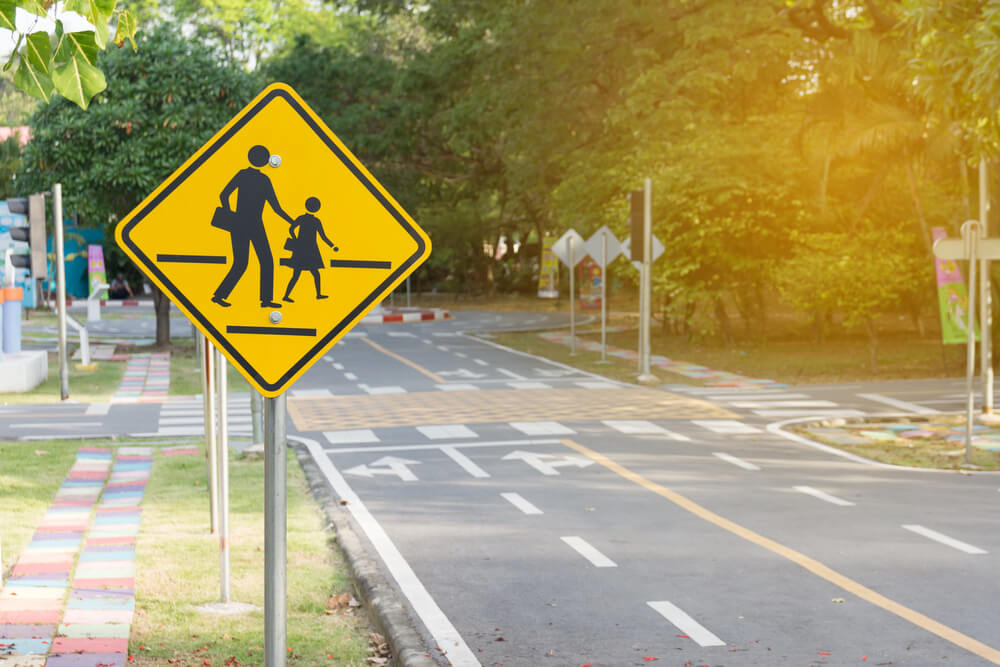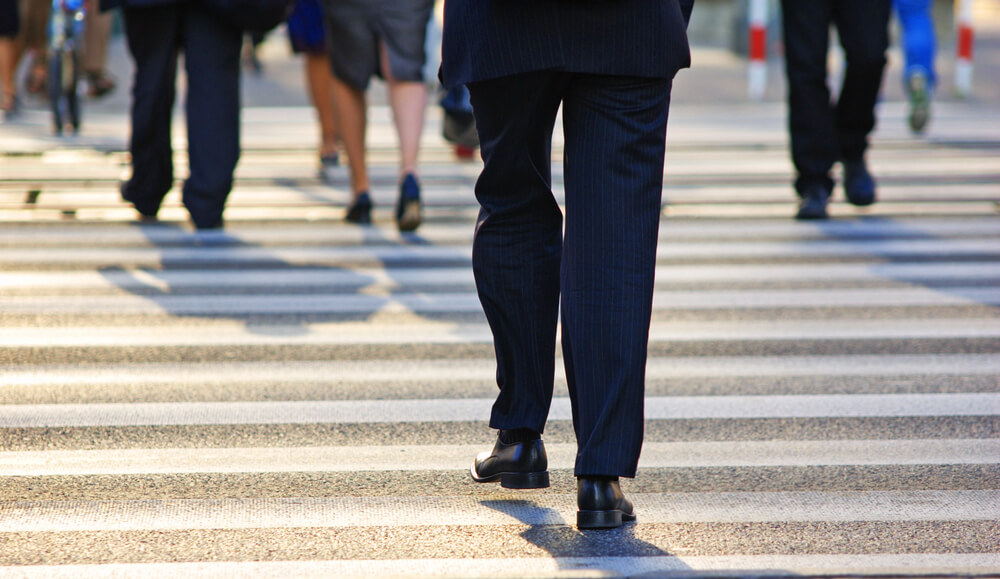What Is a Pedestrian Safety Zone?
One way to reduce pedestrian crashes is to create a pedestrian safety zone. These special zones allow infrastructure designers and engineers to implement safety measures in areas with a high volume of pedestrian traffic.
What Is a Pedestrian Safety Zone?

A pedestrian safety zone is a designated area where there is a lot of foot traffic. The spaces around schools or transit hubs are examples of this type of location. These areas have the potential for a large number of accidents and injuries from vehicles striking pedestrians.
These zones were first developed in a partnership between the National Highway Traffic Safety Administration and the Federal Highway Administration. They are designed to reduce pedestrian accidents and increase safety. Some zones focus on a single problem in an area while others attempt to resolve multiple traffic issues within a limited geographic area.
Population Specific Zones
When accidents involve a large number of people from a specific demographic that can be tied to a location, officials may decide to create a pedestrian safety zone to protect that group. For example, multiple crashes involving older adults near a community or senior center may warrant the installation of protective measures near the site. Likewise, marked crossings and signage near a school could be components of a safety zone to counter accidents involving children.
Safety Islands
Pedestrian safety islands use a comprehensive approach to reduce accidents. They reduce the amount of time pedestrians are on pavement at intersections and other high-crossing areas. The Urban Street Design Guide recommends them where pedestrians must cross three or more lanes of traffic in one direction.
According to the guide, the design of safety islands should include medians of sufficient size to accommodate a bicycle or large stroller. Crosswalks integrated into the design offer clear routes for pedestrians and an integrated nose offers additional protection from turning vehicles.
What Are the Benefits of Pedestrian Safety Zones?
Increased safety from fewer crashes is the most significant benefit of a pedestrian safety zone. It is the main reason that planners consider and install these special zones. One comprehensive approach in Maryland led to a 43% drop in pedestrian crashes in the designated zone.
Other benefits include increased walkability, which improves many outcomes of a neighborhood, such as promoting local businesses and increasing physical activity among community members. Additionally, when residents choose human-powered transportation, it improves air quality. Reasons such as these have resulted in many cities and towns adopting the idea of safety zones.
What Tools Help Protect Pedestrian Zones?

Officials may choose a number of tools depending on the type of common accidents in an identified zone. In many cases, a combination of tools yields the most effective results.
Pedestrian Crossings
Crosswalks provide clear areas for pedestrians to cross roadways. In addition to paint that contrasts pavement, they may use signage, traffic signals, and physical barriers to increase safety. Crosswalks in pedestrian safety zones may utilize a crossing guard or other safety officer during high-use times.
Pavement-Based Barriers
Pavement-based safety measures are inexpensive and often effective. Some common approaches include:
- Curbs: Raised areas of pavement clearly show where pedestrians are safest while reducing the likelihood of a car approaching.
- Islands: Islands allow pedestrians to pause between traffic lanes on larger roads and at major intersections.
- Rumble strips: These scored areas of pavement alert drivers to slow down or avoid a certain area.
- Speed bumps: Speed humps or bumps can be used to reduce vehicle speed. They are effective in high pedestrian areas such as parking lots and near schools.
Used correctly, these measures provide safe areas for pedestrians within targeted zones while also controlling traffic patterns and speeds.
Physical Barriers
Bollards are solid barriers that can be either fixed or moveable. They prevent vehicles from entering pedestrian areas. Bollards are a popular tool around buildings or to separate a designated walkway from traffic flow.
Wedge and beam barriers are additional public safety tools for keeping pedestrians safe. Portable systems are especially effective at creating short-term safety zones for special events, rallies, and other engagements with heavy pedestrian traffic.
Community Education
One of the most important components of an effective pedestrian safety zone is community education. This includes raising awareness among pedestrians and cyclists about common types of accidents and how to reduce them, designated crossings, and other tools to promote safety. It also includes efforts to inform drivers about measures in place to improve pedestrian safety.
Build Effective Pedestrian Safety Zones With Delta Scientific Vehicle Access Control Systems Delta Scientific
With the right tools and planning, a pedestrian safety zone can reduce accidents and injuries caused by pedestrian crashes. Contact us to learn how our Delta Scientific vehicle access control systems, including barriers, bollards, and portable systems, can help create effective safety zones.
Share This Story, Choose Your Platform!
